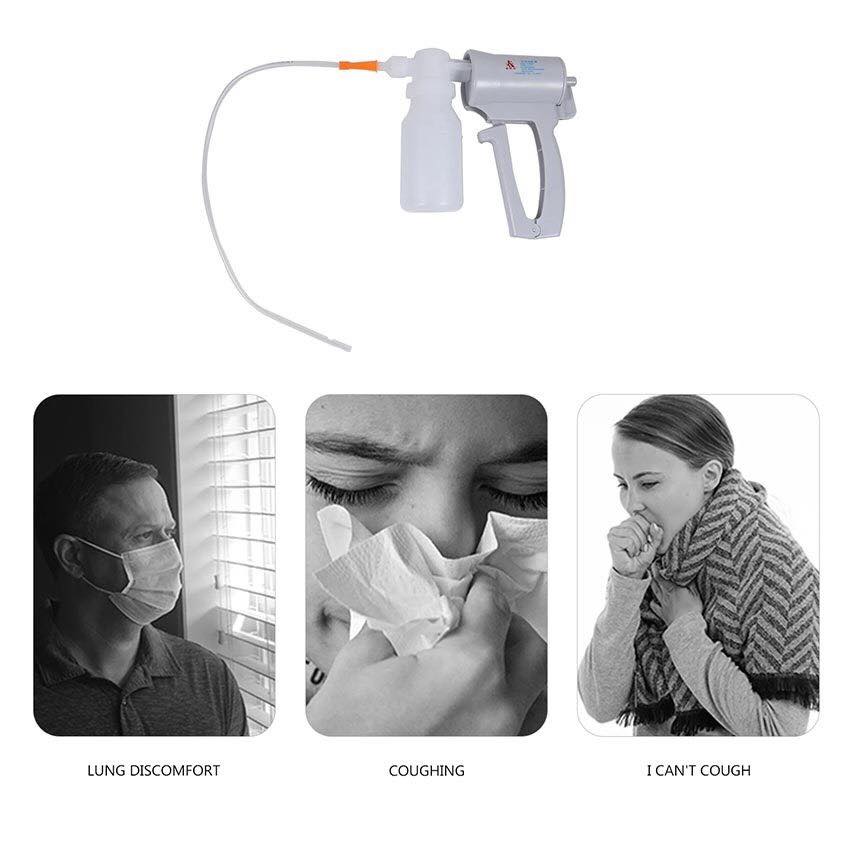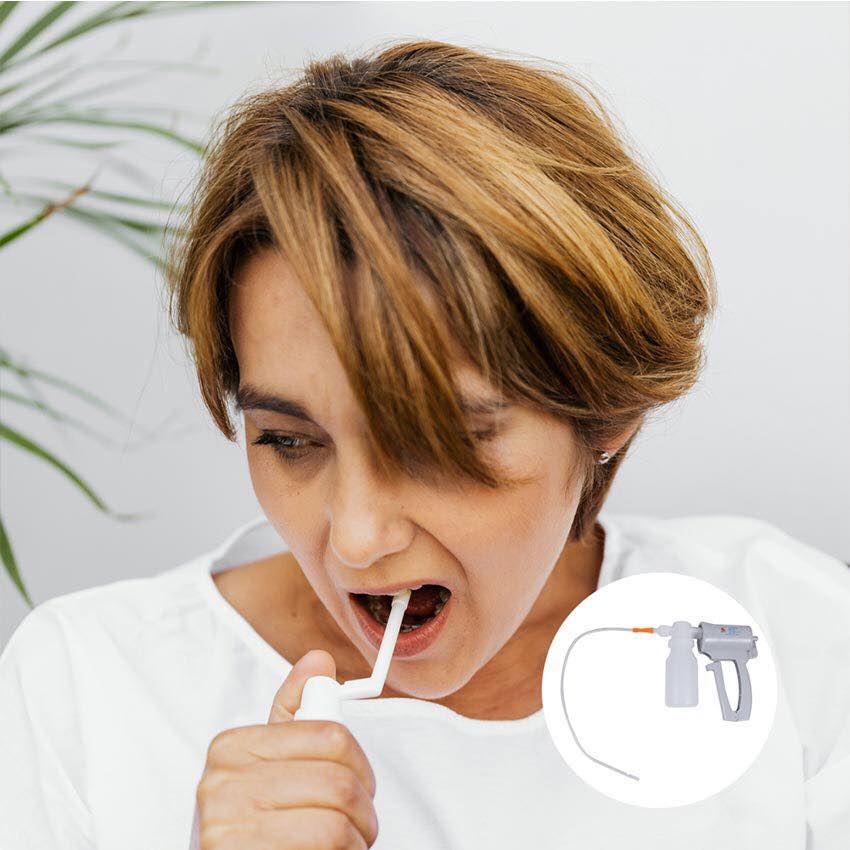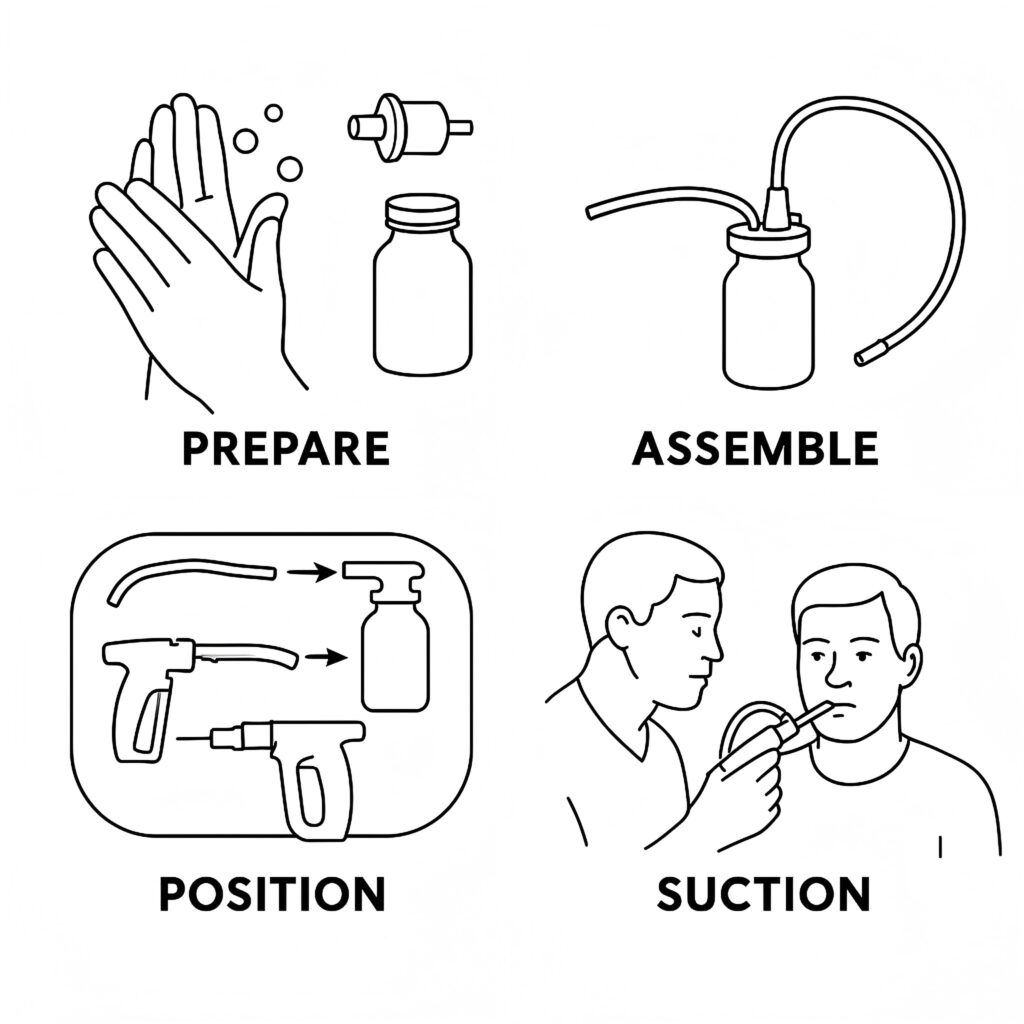If you need a solution that works anywhere—ambulances with a flat battery, rural clinics, home visits, pediatrics—the manual portable sputum aspirator still earns its keep. Think of it as a simple negative pressure suction device that lets you clear secretions so patients can breathe better while keeping risk low and patient care efficient. This guide helps you master the art of choosing the right portable sputum aspirator for your needs without wasting time or money.
TL;DR: Manual units are an essential tool for transport and backup. They are lightweight, reliable, and easy to clean. Battery or AC devices win when you need higher airflow, sustained performance, and hands-free convenience.

What exactly is a manual portable aspirator?
In plain terms, it’s a hand-powered suction pump that creates negative pressure via a squeeze handle or piston. Secretions travel through tubing into a collection jar. Because there’s no motor, it is not medical electrical equipment, which makes the device quiet, rugged, and convenient to keep in stock. The core idea is simple: restore breathing comfort, improve pulmonary function parameters, and support safe procedure steps for a wide range of patients with respiratory diseases.
Who is it for? Where a manual unit shines
- Healthcare professionals who move across various settings: ambulances, disaster tents, schools, nursing homes, home care.
- Infants and fragile patients who benefit from gentle, finely adjustable suction to reduce discomfort.
- Transport and backup when a battery unit is empty or AC power is unavailable.
- Low-resource environments that need dependable equipment with minimal maintenance, clear features, and sensible price.

Key features to check before you purchase
- Suction level and control
Look for models with an adjustment knob or two-stage trigger so you can match suction to the case. Typical adult targets are up to −300 to −450 mmHg; use lower settings for infants and follow local policy. - Airflow (L/min)
Airflow drives effectiveness. A higher peak helps with thick secretions, but sustained, comfortable pumping is just as crucial for real-world performance. - Collection jar capacity
Common sizes range from 300–1000 mL. A clear collection jar simplifies hygiene checks, avoids overfill risk, and speeds maintenance. - Filters and the “extra layer” of protection
An inline bacterial/viral filter between tubing and jar adds an extra layer of protection against bacteria and splashback. An overflow trap is a smart safety detail. - Lightweight design and ergonomics
One-hand or pistol-grip pumps reduce fatigue. A lightweight device is easier to carry, store, and deploy—real convenience for busy users. - Build quality, spares, and manufacturer support
Gaskets, valves, and lids wear out. Choose a manufacturer that offers spare parts, clear IFUs, and responsive support to maintain quality and efficiency. - Compatibility across models
Standard connectors for tubing and catheters let you accommodate replacements across different models and settings. - Price and total cost
Compare what’s in the box: jars, filters, carry case. The total purchase cost and ongoing consumables usually matter more than sticker price.

Manual vs battery vs AC: quick compare
| Use case | Manual portable | Battery portable (rechargeable) | AC tabletop |
|---|---|---|---|
| Power | None (human power) | Rechargeable battery | Wall power |
| Strength / airflow | Moderate, burst-based | Higher, steadier | Highest, continuous |
| Weight | Lightweight and compact | Light–medium | Heavier |
| Best for | Transport, backup, pediatrics, field | Home care, ward rounds | Clinics with high frequency suction |
| Limitations | Operator fatigue; lower sustained flow | Battery cycles and charger reliance | Not portable; larger footprint |
Takeaway: Many teams carry both. Manual for no-power reliability and delicate suction; electric for higher frequency tasks that demand steady power and throughput.
A 60-second decision tree
- Need guaranteed operation with no power available? → Choose manual.
- Expect thick secretions for more than 2–3 continuous minutes? → Consider battery or AC as primary; keep manual for backup.
- Mostly pediatrics, short treatment windows, or brief procedure steps? → Manual with fine adjust control and soft catheters.
- Mixed settings (home plus transport)? → Manual plus a compact battery unit.
- Tight budget now, growth in frequency later? → Start manual; add electric as usage increases.
Setup and basic procedure: five practical steps
- Prep
Hand hygiene. Install a bacterial/viral filter to add that extra layer of protection. Inspect tubing and jar seal; confirm the one-way valve. - Assemble
Connect catheter → tubing → collection jar → pump. Verify secure fittings. - Position
Semi-upright if tolerated. Monitor breathing and any protocol-required health indicators during the procedure. - Suction
Insert catheter gently; pump rhythmically to create negative pressure. Keep each pass short to limit hypoxia risk. - Finish and maintain
Cap or dispose of single-use parts per policy. Clean, disinfect, and dry reusable components. Proper maintaining protects equipment life and keeps day-to-day efficiency high.

Limitations and risk control
- Manual units are not ideal for prolonged, high-volume loads of thick secretions.
- Operator fatigue can reduce effectiveness; rotate staff for frequent use.
- Follow local rules to avoid mucosal trauma and bradycardia during airway procedure.
- For oxygen-dependent patients who need frequent suction, a rechargeable battery or AC unit is the more suitable primary choice.
What “good” looks like: a quick spec snapshot
- Peak vacuum up to −300/−450 mmHg with fine adjust control
- Airflow targets published in L/min; higher peaks for short bursts
- Clear collection jar of 300–1000 mL with a wide lid
- Inline bacterial/viral filter plus overflow trap for protection
- Ergonomics that reduce pump fatigue; one-hand operation if possible
- Lightweight design around or under 800 g
- Spare parts, consumables, and support readily available from the manufacturer
Buying tips so you don’t regret it later
- Match setting to model: transport needs compact cases; home-care values quiet operation and spare jars.
- Count the “hidden” costs: filters, jars, and catheters drive long-term price.
- Confirm warranty and response time: quick assistance limits downtime.
- Trial before volume: one sample in your real workflow tells you more than a spec sheet.
- Documentation and training: clear instructions improve safety, hygiene, and day-one performance.

Frequently asked questions
Is a manual aspirator enough for adults?
Yes for short, intermittent suction. For high-volume or long procedure windows, a battery or AC unit should be primary, with manual as backup.
What about infants?
Choose models with fine adjust control and soft catheters. Keep suction times short and pressures low.
How often should filters and tubing be replaced?
Follow the IFU. Many teams treat these as single-patient use to maximize hygiene, protection, and overall quality.
Final word and where to get support
Manual aspirators are essential in real life: simple, reliable, and always ready. Pairing a manual with a battery unit gives you coverage across various settings, improves convenience, and can enhance outcomes while managing price and logistics. If you need samples, specs, or lead-time details, our team can help you compare model options and features quickly.
Learn more or request a kit at Jiekang: https://jiekangrescue.com/



